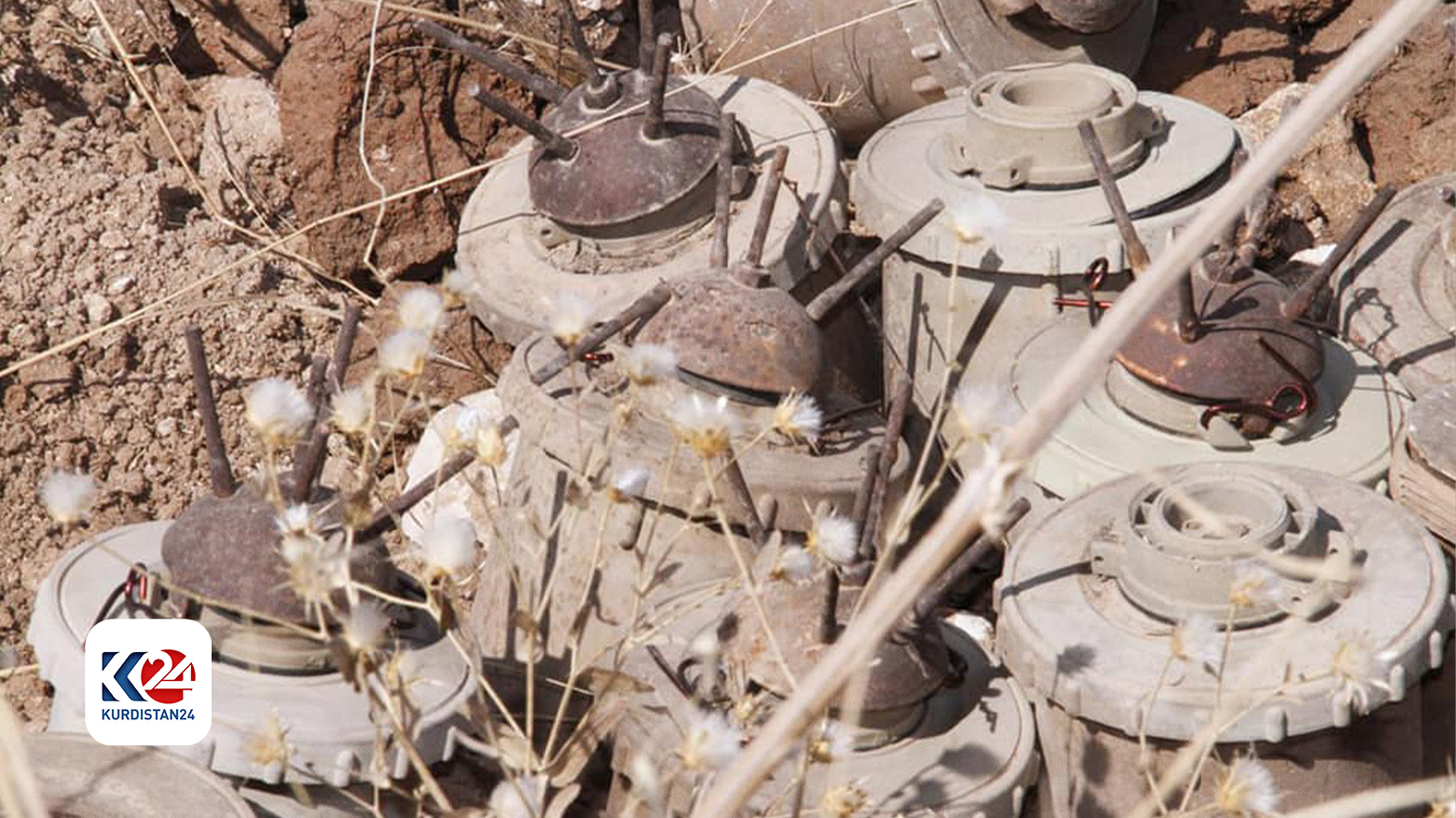KRG makes significant strides in mine clearance, 71 percent of contaminated land cleared
More recently, between 2014 and 2017, ISIS also contributed to the contamination by planting mines and improvised explosive devices (IEDs), often with modified designs that required specialized expertise to defuse and remove.

ERBIL (Kurdistan 24) – The Kurdistan Region has made notable progress in clearing landmines and explosive remnants of war (ERW) over the past three decades, with 71% of the contaminated areas now cleared, according to Niazi Khalid, the Acting Head of Iraqi Kurdistan Mines Action Agency (IKMAA).
The contamination of the Kurdistan Region with landmines and explosives dates back to the Ba'ath regime's efforts to suppress the Kurdish people's struggle for freedom. The issue was further compounded by subsequent conflicts, including the Iran-Iraq War and the 2003 invasion of Iraq.
Khalid noted that the Ba'ath regime not only perpetrated atrocities against the people of Kurdistan but also left a legacy of environmental destruction through widespread landmine contamination.
In the lead-up to the 2003 war, the Ba'ath regime further mined areas of the Kurdistan Region, particularly along the border with Turkey in Duhok province.
More recently, between 2014 and 2017, ISIS also contributed to the contamination by planting mines and improvised explosive devices (IEDs), often with modified designs that required specialized expertise to defuse and remove.
"Foreign experts have provided training courses for mine clearance experts from the General Agency for Mine Affairs and the Ministry of Peshmerga," Khalid stated.
Over the past 30 years, the Mine Action Agency, in coordination with the United Nations, has worked tirelessly to clear contaminated lands and eliminate explosives, according to Khalid. The agency has established directorates in each province and has borne the costs of mine removal to the best of its ability.
During a recent visit, Prime Minister Masrour Barzani issued directives aimed at further enhancing mine clearance efforts. These include the establishment of a directorate of the Mine Action Agency in Halabja province, which still has approximately 10 million square meters of land contaminated with mines.
"Of the 776 square kilometers of land contaminated with mines and explosives in the Kurdistan Region, we have been able to clear more than 550 square kilometers," Khalid said. "Of this, around 350 square kilometers were cleared through non-technical surveys, saving the KRG millions of dollars."
These accomplishments underscore the significant progress made in addressing the landmine problem in the Kurdistan Region, although the work continues to ensure the safety and well-being of its people and to reclaim contaminated lands for productive use.
